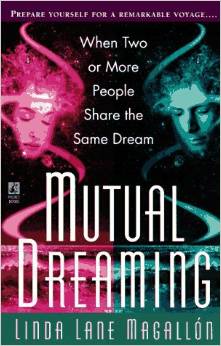Mutual dreams and dreaming
Dreaming is said to be "mutual" or "shared" when two or more persons recall having had the same dream or related dreams during the same night, this occurring most often among close friends or family members. These can be realistic, symbolic or a mixture of both.
There are several different forms that are described in Linda Lane Magallón's 1997 book "Mutual Dreaming":
* Shared dreams in which two (or more) persons have had the same or similar persons, places, landscapes, and/or objects in the dreams of the same night (and establish this afterwards).
* Meeting dreams in which two (or more) persons encounter each other and even interact in the dreams of the same night.
* Meshing dreams in which the dream egos "merge" meaning that those involved see and experience the same or very similar dreams from the same point of view and do the same or similar things.
* Contiguous dreams in which one person's dream can be seen as a continuation of another person's dream (from the same night).
Important factors that are involved include 1) Shared psychological history (common day residues), 2) common intent, 3) coincidence, 4) synchronicity, 5) precognition, and 6) telepathy. Mutual dreaming can involve lucid dreaming (see next section) and/or group dreaming (see that section).
Previous section Next section List of sections List of chapters

